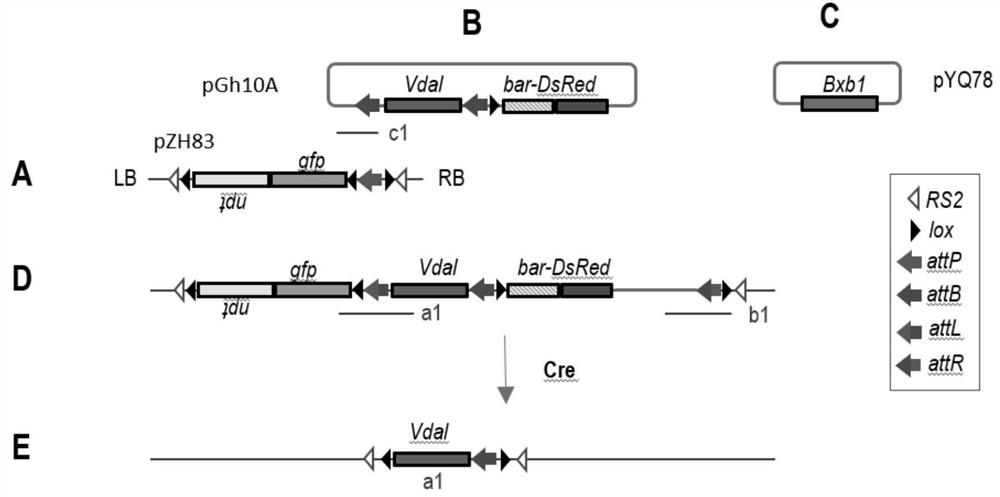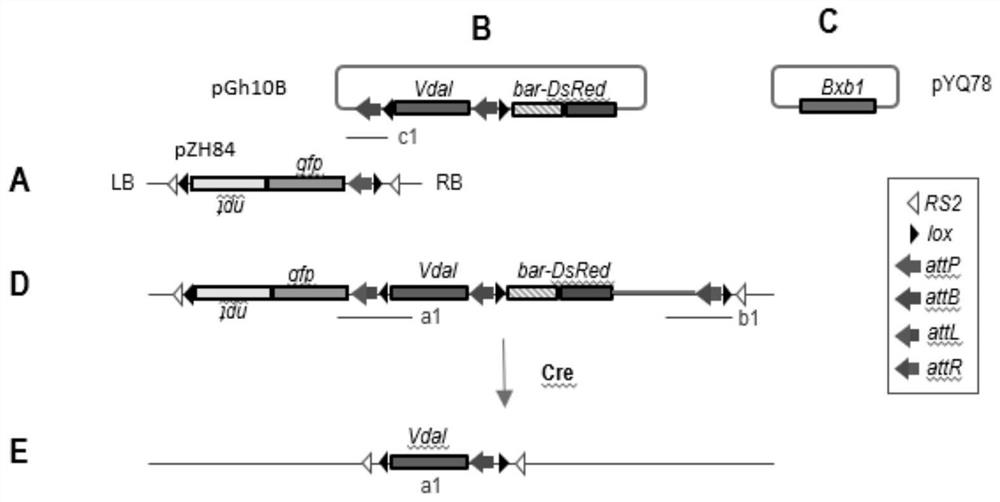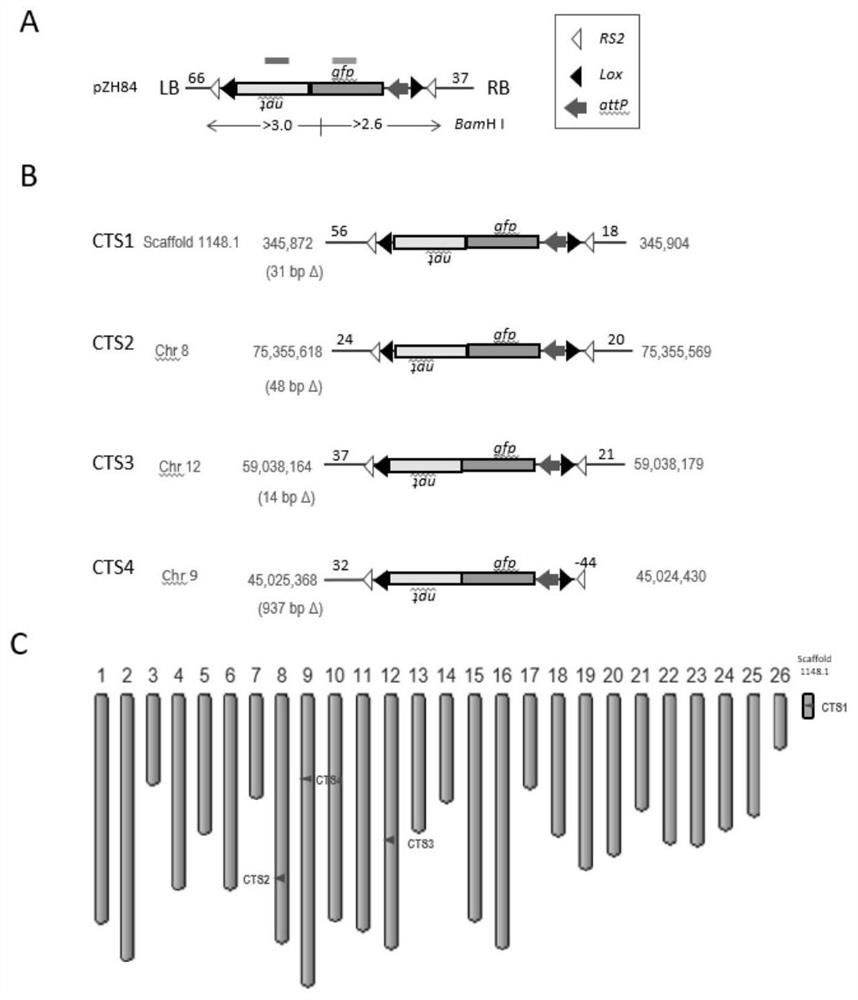Establishment and Application of Cotton Gene Stacking Target Line
A cotton genome and cotton technology, applied in the fields of application, genetic engineering, plant genetic improvement, etc., can solve the problems of low efficiency and long cycle, and achieve the effect of reducing the number and workload
- Summary
- Abstract
- Description
- Claims
- Application Information
AI Technical Summary
Problems solved by technology
Method used
Image
Examples
Embodiment 1
[0046] Example 1 Acquisition of cotton initial target line (target site)
[0047] Vector construction
[0048] The structure of the target vector and the superimposed vector is as follows figure 1 and 2 As shown, it was constructed with reference to standard recombinant DNA methods. All PCR reactions used KOD FX high-fidelity polymerase (TOYOBO, Japan).
[0049] Target vector gene promoter and terminator:
[0050] The promoter of npt is cotton ubiquitin (Ubiquitin) promoter, and the terminator is cauliflower virus (CaMV35s) terminator. The promoter of the green fluorescent reporter gene gfp is sugarcane baculovirus (ScBV) promoter, and the terminator is octopine synthase (ocs) terminator. The promoter of the cre recombinase gene is the CaMV35S promoter, and the terminator is the nopaline synthase (nos) terminator.
[0051] Promoters and terminators for stacking vectors:
[0052] The promoter of the selection marker gene bar, bar-DsRed or DsRed-bar is CaMV 35S, and the t...
Embodiment 2Bxb1
[0102] Example 2Bxb1 mediates site-directed integration of cotton initial target lines
[0103] We tested Bxb1 recombinase-mediated site-directed integration in cotton. As shown in the application of these target systems Figure 1 Similarly, the embryogenic callus induced by the starting target lines CTS1 and CTS4 were used as explants to test the site-directed integration of the target lines. The stacking vector contains a combination of different cotton verticillium wilt resistance genes, and the vector size ranges from 7.6kb to 11kb ( Figure 7 A) Different, the stacking vector and Bxb1 recombinase expression vector pYQ78 co-transformed embryogenic calli of the target line, and the trait gene was integrated into the genome attP site ( Figure 7 B), the site will be combined with the stacking vector ( Figure 7 Recombination occurs at either of the two attB sites in A), resulting in Figure 7 Structure after site-directed integration of two trait genes C and 7D, structur...
PUM
 Login to View More
Login to View More Abstract
Description
Claims
Application Information
 Login to View More
Login to View More - R&D Engineer
- R&D Manager
- IP Professional
- Industry Leading Data Capabilities
- Powerful AI technology
- Patent DNA Extraction
Browse by: Latest US Patents, China's latest patents, Technical Efficacy Thesaurus, Application Domain, Technology Topic, Popular Technical Reports.
© 2024 PatSnap. All rights reserved.Legal|Privacy policy|Modern Slavery Act Transparency Statement|Sitemap|About US| Contact US: help@patsnap.com










